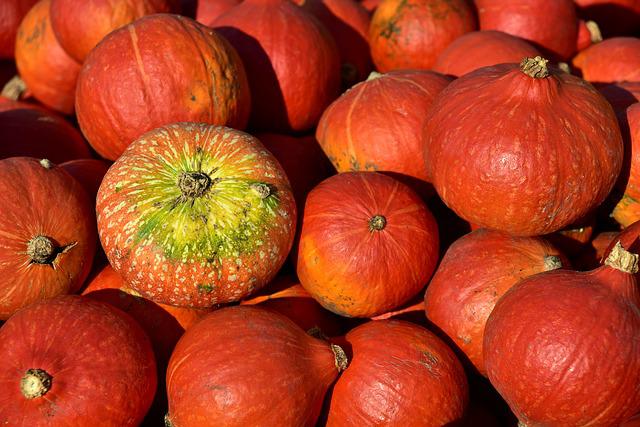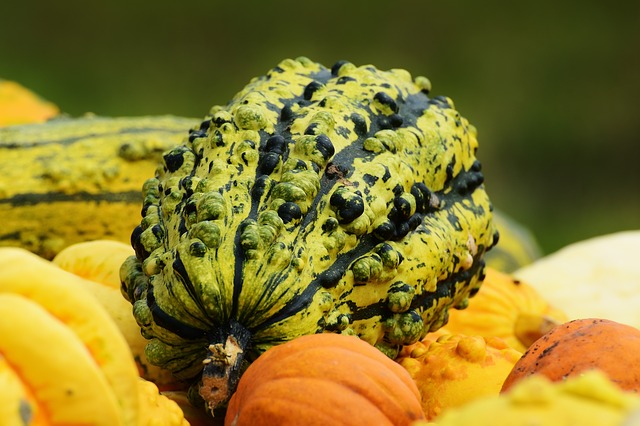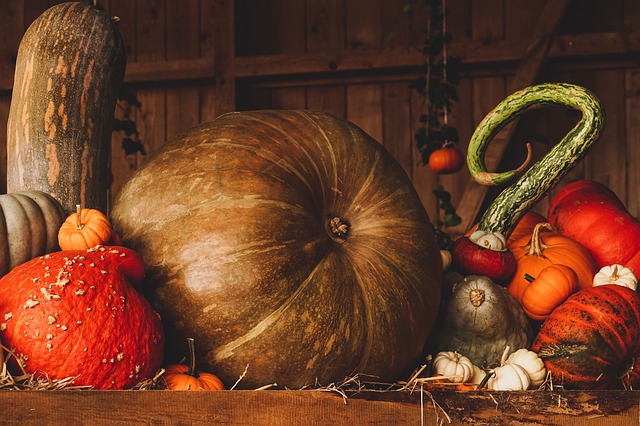Do Pumpkins Need a Lot of Water? How Much Water Do Pumpkins Need?

Since 80–90% of a mature pumpkin is water, you can be sure that pumpkins need a lot of water as they grow when the soil is dry, water the plants. Normal for pumpkin leaves to wilt at noon, but if plants are wilting in the morning, they need water.
Pumpkins require regular watering due to their high water consumption and large leaves. Pumpkins must have sufficient water when they flower and produce fruit.
As plants develop, observe whether their leaves wilt in the middle of the day. If so, they must have water. Plants that wilt for a brief period will produce a smaller harvest. Plants that wilt often or for a long time might die. Each week, pumpkins, squash, and gourds require at least one inch of water.
Use either drip or sprinkler irrigation. Drip irrigation works exceptionally well beneath a system of black plastic mulch. Drip irrigation is water-efficient and ensures that your pumpkins receive the proper water each week. Mulch can help retain soil moisture. New roots form when a pumpkin, squash, or gourd’s leaf and stem touch the soil. Too much mulch will prevent this root from growing.
Table of Contents
How Much Water Do Pumpkins Need?
Pumpkins require one to two inches (2.5 to 5 cm) of water per week. Daily watering is not necessary for your plants. Instead, water them thoroughly several times per week. Pumpkins thrive in moist, well-drained soil. When the soil dries out, you will know the plant needs water. If plants go too long without sufficient water, their leaves will wilt.
When the soil begins to dry out every two to three days, give your plants a good watering. Pumpkins require watering once the top inch (2.5 cm) of soil has dried. 3.8 liters of water per plant per watering session is the recommended minimum. If you have a pumpkin patch, you don’t have to water it every day.
It is time to increase the watering frequency when the temperature reaches 95°F (35°C). Suppose the soil dries out sufficiently between waterings, water once every two days in extremely hot weather. By providing the plants with more water, heat stress will be less of a threat. Consider draping a tarp over the area if it’s particularly hot outside. Protecting the vines from the heat will slow their growth.

What’s the Best Way to Water a Pumpkin?
The best time to water is in the early morning. To keep your plants healthy, only water them at the base. The water should not splash the leaves and stems. To prevent soil erosion, water pumpkin plants from the bottom up and slowly. Watering the tops of a plant can cause it to become infected. Watering your lawn in the early morning is always a good idea. As a result, any water accumulated on the foliage will be evaporated by the late afternoon sun. Even a simple jug or watering can do the trick, as long as it isn’t overflowing.
Watering your garden has never been easier than with a drip irrigation system. Using drip irrigation, water is added on a predetermined schedule.
Slow, deep soaks are required every 7-10 days if there is no rain in your area. Puddles should form on the soil’s surface due to consistent watering.
Installing this drip irrigation system will make watering a lot more convenient! The system automatically adds the specified amount of water at the specified time. Also, the water is delivered directly to the soil using the hoses in this system. As a result, there is no risk of water getting on the leaves or stems.
Watering pumpkins requires careful consideration of soil consistency. Your watering schedule will be less frequent when you live in a region with a more compact soil structure. On the other hand, sandier soils require more watering.
How Can You Tell If Pumpkins Require Water?
When the top inch (2.5 cm) of soil feels dry, it’s time to water the pumpkins. Plants do best in moist soil that is consistently moist. Even with plenty of water, pumpkin leaves wilt in the middle of the day. However, once the temperatures drop, they should recover.
- When the soil feels dry, give your pumpkin plants more water.
- When the soil is consistently moist, pumpkins grow best.
- Leaves wilt.
- Look for wilted leaves late at night.
- Make sure they’re getting enough water by checking the moisture level.
- Look for wilted leaves as the temperature drops in the afternoon. This indicates that your plants are dehydrated. It’s also a sign of waterlogged roots, which is unfortunate. To determine whether or not the plants require water, check the moisture level in the soil. This soil moisture meter will assist you in determining your plants’ water requirements.
When Do I Stop Giving My Pumpkins Water?
As it gets cooler and the days get shorter, they will get shorter. You can stop giving the pumpkins water now.
In most places in the Northern Hemisphere, this is around September 1. If your pumpkin plants are still making a lot of fruit, keep watering them until they stop making new fruit.
If you live in Southern Florida that doesn’t have a clear fall or winter season, it’s best to stop watering all of your plants after October 1.
Wet or Dry Soil: Which is Better for Pumpkins?
Waterlogged soil is not ideal for pumpkins. Similarly, soil that is too dry is ineffective. It’s a detriment to nearly all pumpkins’ health. Moisture-loving, well-draining soil is ideal for these plants. Water the soil thoroughly to keep it from drying out every few days.
The best soil for growing pumpkins is consistently moist but also permeable. Water the pumpkins thoroughly every few days to keep the soil moist.
Mix coarse sand, garden soil, compost, and aged manure to create sandy soil.
Organic matter in sandy soil helps to keep it moist. Mix coarse sand with garden soil, compost, and well-aged manure to create your blend. Before you plant, use 10-10-10 fertilizer.
Can Pumpkin Plants Be Overwatered?
Overwatering pumpkins are the most common error gardeners make, which can lead to disease problems later on. Checking soil moisture before watering is one of the simplest ways to avoid this. Do not water until the soil is moist to the touch at 2 inches.
You don’t need to add more water if your plants are doing well and producing much fruit.
The pumpkin leaves become yellow and eventually drop off when it is overwatered. There’s a good chance this will happen within a week or two if you’ve accidentally overwatered your plants.
Over-watering pumpkins, like underwatering, will result in leaf loss, but the process will take longer. Depending on how much water is given at one time or if it is overwatered regularly, root rot and the death of the plant can occur.
As a new plant (or patch) may take several months to grow in its place after over-watering, there isn’t much that can be done. Watering in the early morning or late evening will help prevent this.
Outside watering can be done in the rain as well. Pumpkin plants aren’t the only ones at risk from overwatering. Adult plants can become infected and die if they are over-watered.

Watering Giant Pumpkins
Pumpkins that weigh 200 to 300 pounds are known as Cucurbita maxima, which is a species of a large pumpkin. Like other types of squash, Pumpkins are thirsty plants that are particularly sensitive to changes in moisture levels. Maintain the proper amount of water for your giant pumpkin plant so that the vines and pumpkin fruit can grow to their full potential.
- Cover the giant pumpkin vine with 3 to 4 inches of mulch, such as shredded leaves or weed-free straw. Reduces the need for irrigation by helping to conserve soil moisture.
- Give the pumpkin plant morning watering with a garden hose positioned directly at its base. Take care to avoid any splashing or spraying of water to keep the vine and leaves of the giant pumpkin plant dry. Make sure you use enough water to saturate the ground to about 15 centimeters.
- Continue to water the soil every day or as often as is required to keep the soil at an even moisture level. In addition, you should water your giant pumpkin plant as soon as you have finished fertilizing it, which should be done approximately once every two weeks and requires a one-half cup of 10-10-10 fertilizer per plant. The water assists in delivering the nutrients from the fertilizer to the roots of your pumpkin plant.
- Create a “moat” around your pumpkin tree if it’s situated in the middle of a mound. This will help keep the soil moist when you’re watering the tree. This will allow the water to penetrate deeper into the soil, allowing your small pumpkin plants to benefit. Ensure to water the mound carefully if you have a new plant that hasn’t established its roots yet.
Your pumpkins’ watering needs will skyrocket once they reach full maturity, so be prepared! Because their roots have grown to this stage, water will reach the plants’ roots without additional evaporation. Even if your plant begins to produce fruit, you should continue water it at least once a week.
